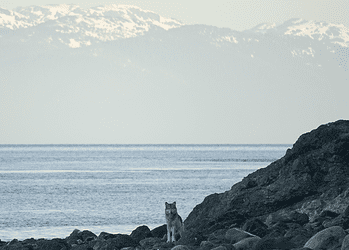
Let’s take a dive beneath the shallow waves off northern Australia, near the city of Darwin. There, tucked inside the convoluted channels of a sponge, lives a millimeter-sized animal that rewrites the rules of biology. It has one mouth, hundreds of butts, and no way to leave.
Ramisyllis multicaudata, a worm that doesn’t slither, swim, or squirm. It doesn’t roam the seafloor or dig through sediment. It doesn’t really move at all. Instead, it permanently stays embedded inside its sponge host — while hundreds of its rear ends crawl around on the outside, exploring the world for it. It’s an animal so strange that its discovery in 2006 sent ripples through the zoological community, and it continues to challenge how scientists think about body plans, symbiosis, and even individuality.
A worm that seems to defy biology
Our story starts with Petrosia sponges, commonly known as stony sponges for their hardened structures. Look across enough of these sponges and you’ll come across something extraordinary: a slender, branching worm with one head deeply buried near the base and up to a hundred or more tails snaking outward through the sponge’s water-filled canals.
Each one of those tails ends in an anus; in other words, this worm has tens or even hundreds of anuses. Every one of them is alive, wriggling, sensing and exploring while the worm itself has its head deeply embedded in the sponge.

The juvenile worm settles at the sponge’s base. Then it grows — not linearly, like most animals — but by branching. Over time, its body splits again and again, forming a dendritic structure like a tree with a single trunk and hundreds of writhing branches. Each branch contains not just muscle and skin, but a full complement of organ systems: gut, nerve cord, blood vessels.
This kind of branching is extraordinarily rare in the animal kingdom. In fact, R. multicaudata is one of only three known animals to pull off this architectural trick. The others — Syllis ramosa and Ramisyllis kingghidorahi — are also sponge-dwelling worms, but they evolved their bizarre forms independently, a striking case of convergent evolution.

The way the worm creates these new structures is absolutely stunning. Every time its body splits into a new tail, the internal architecture also splits. The gut forks, the nerve cords divide, the blood vessels branch. Even the muscles reorganize to maintain integrity.
Researchers have discovered special “muscle bridges” at these junctions — distinct bands of muscle that seem to stabilize the body at its most vulnerable points. These bridges may also serve as developmental fingerprints, allowing scientists to trace the growth history of an individual worm.
How do you nourish a hundred butts?
Despite having a fully functional digestive system running through every branch, Ramisyllis multicaudata poses a profound riddle: its gut is empty. Again and again, researchers have dissected specimens, expecting to find sponge particles or microbes — anything that could explain how the worm fuels its massive body. But the gut reveals almost nothing.
This leads to an astonishing possibility: the worm may be absorbing dissolved organic matter directly from the seawater flowing through the sponge’s canals. If true, that would make it one of the few animals known to sustain itself this way. Another hypothesis is that the worm is somehow tapping into the sponge’s microbial residents or harvesting nutrients in a more cryptic manner.

What’s certain is that it’s not munching on its host. Sponge skeletal elements — called spicules — are almost entirely absent from its gut. And there’s no visible damage to the sponge that would suggest parasitism.
But this may not even be the most bizarre thing about this worm. When it comes to reproduction, it goes completely out of the box.
“Tails, go reproduce!”
When it’s time to mate, the worm doesn’t go looking for a partner. Instead, some of its tails transform.
Each branch prepares a tiny reproductive unit called a stolon — essentially a detachable butt filled with either eggs or sperm. Then, as if possessed by an independent will, the stolon grows a pair of eyes, develops its own brain and nervous system, and breaks off from the parent worm.
These “autonomous gonads” swim away from the sponge into the open water, where they seek out stolons of the opposite sex. After releasing their genetic payload, they die… if they were even alive to begin with.
Meanwhile, the parent worm stays put and regenerates the lost tissue. In this way, a single R. multicaudata can dispatch tens or even hundreds of DNA-packed stolons into the world — each one a tiny, temporary organism with its own rudimentary “mind”.
This challenges what it even means to be an individual. Where does the “self” of the worm reside? Is it in the buried head, unseen and unmoving? Or is it dispersed across the network of branching bodies, each with its own agency?
In evolutionary terms, R. multicaudata operates more like a colony of modules than a traditional singular organism. It blurs the boundary between unitary and modular life — between being one thing and being many. This organism forces biologists to reconsider long-held assumptions about individuality, agency, and what it means to be a coherent living being.
A reminder of the unknown
That a creature so radically strange could live in plain sight — in shallow coastal waters near a city like Darwin — is a humbling reminder. The ocean still holds countless secrets, even in places where we think we’ve looked.
In a world of octopuses with arms that can taste, and jellyfish that may live forever, this worm may still be the most baffling animal of them all. Not because of what it lacks, but because of how radically it reimagines what a body can be like.






